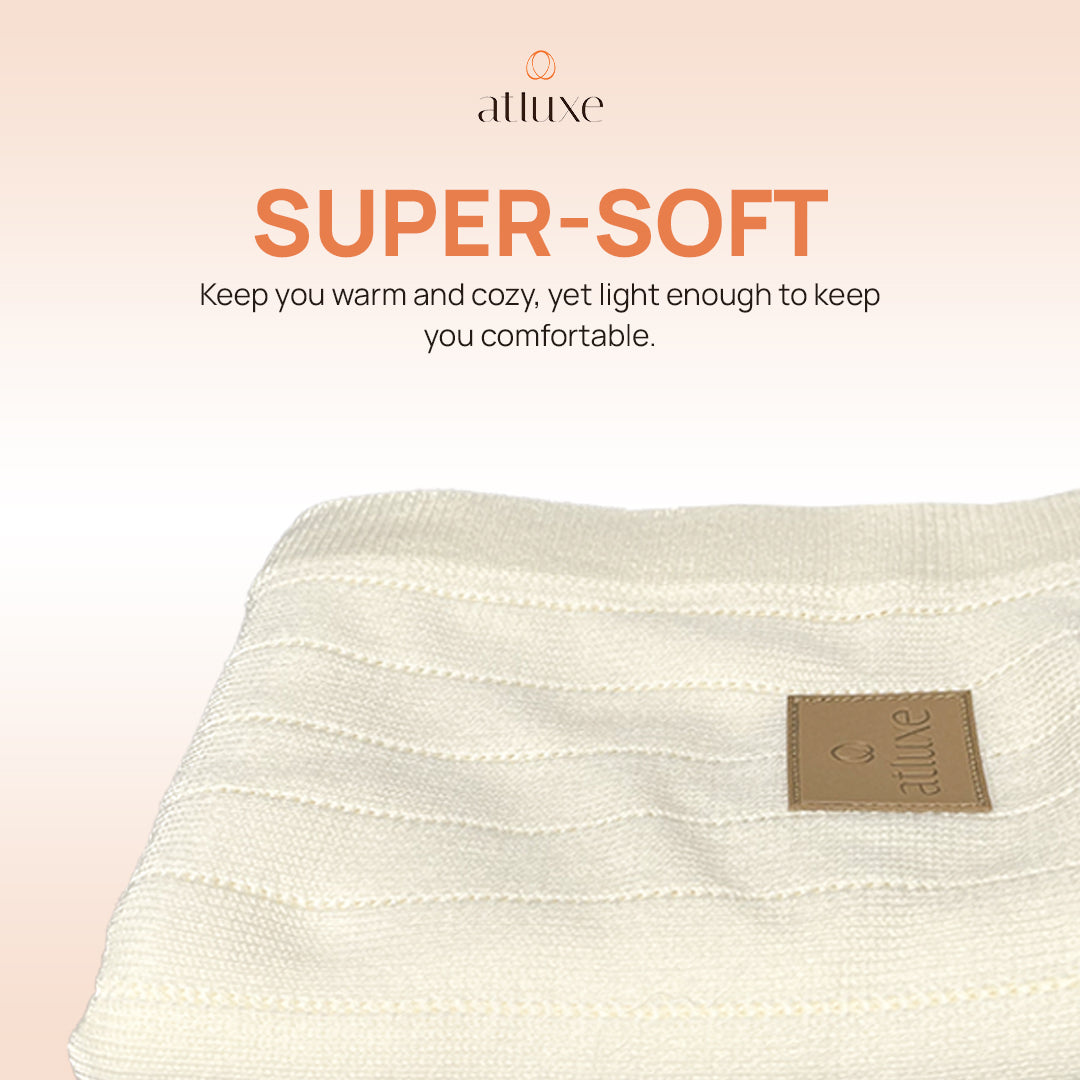Swaddle Your Baby Right: My Easy Step-by-Step Guide
As a new parent, I know how overwhelming and exciting it can be to welcome a tiny bundle of joy into your life. The first few months are filled with precious moments and sleepless nights, but there's one technique that can make a world of difference: swaddling.
When I became a parent, I was amazed at how swaddling transformed my baby's sleep. It was like a magical cocoon that provided comfort and security, helping my little one settle down and drift off to dreamland. It became our nightly ritual, and I couldn't imagine parenting without it.
But here's the thing - swaddling is not as simple as it seems. There's a right way to do it, and doing it correctly can make all the difference in your baby's comfort and safety. That's why I've created this easy step-by-step guide on how to swaddle your baby correctly.
Whether you're a first-time parent or just looking for some swaddling tips, this guide will walk you through each step, ensuring that you can swaddle your baby with confidence and ease. Let's dive in and discover the magic of swaddling together.
Key Takeaways:
- Swaddling can provide comfort and security to your baby, helping them settle down and sleep better.
- Swaddling correctly is important for your baby's safety and comfort.
- This step-by-step guide will help you learn how to swaddle your baby properly.
- Swaddling can be a magical technique that enhances your baby's sleep routine.
- Follow these steps to swaddle your baby with confidence and ease.
The Benefits of Swaddling Your Baby
Before we dive into the step-by-step guide, let's explore the benefits of swaddling. Swaddling can help calm infants, promote better sleep, and create a sense of security. Additionally, swaddling can help reduce the risk of Sudden Infant Death Syndrome (SIDS) by providing a safer sleep environment for your little one.
When you swaddle your baby, it mimics the feeling of being in the womb, offering a cozy and familiar sensation. This can help soothe and comfort your baby, especially during the early months when they are adjusting to the world outside.
By restricting their movements slightly, swaddling can also prevent the startle reflex from waking your baby. This reflex, also known as the Moro reflex, causes newborns to jolt and wake themselves up. Swaddling provides gentle pressure and support to limit these involuntary movements and promote a more peaceful sleep.
Additionally, swaddling can help regulate your baby's body temperature, keeping them warm and comfortable throughout the night. It also reduces the risk of loose bedding obstructing their airway, offering a safer sleep environment.
The benefits of swaddling extend beyond sleep. It can also help infants feel more secure in their surroundings, providing a sense of comfort during moments of distress. Swaddling can create a calmer and more settled environment for your baby, allowing them to better regulate their emotions and cope with new experiences.
Overall, swaddling is a valuable practice that can help both babies and parents. It promotes better sleep, reduces the risk of SIDS, and provides a soothing and secure environment for your little one. Now that we've explored the benefits, let's move on to the step-by-step guide on how to swaddle your baby correctly.
When and Where to Swaddle Your Baby
https://www.youtube.com/watch?v=qjUhHFNLZdw
When it comes to swaddling your baby, creating a safe sleep environment is essential. By following these safe sleep practices, you can ensure that your baby sleeps soundly and comfortably.
Place Your Baby in the Right Sleep Space
Always place your baby on their back to sleep in a crib or bassinet that meets safety standards. Choose a firm mattress that fits snugly without gaps. Avoid using soft bedding, such as pillows or stuffed animals, as they can pose a suffocation hazard.
Avoid Co-Sleeping
While it may be tempting to bring your baby into bed with you, it's important to remember that it increases the risk of suffocation and Sudden Infant Death Syndrome (SIDS). It is safest for your baby to have their own sleep space.
Keep the Sleep Environment Clear
Remove any loose blankets, toys, or crib bumpers from your baby's sleep space. These items can increase the risk of suffocation or entanglement. A clear and clutter-free sleep environment is the safest choice for your little one.
Swaddle in a Safe Manner
Once you have created a safe sleep environment, you can proceed with swaddling your baby. Remember to follow the proper swaddling technique to ensure your baby's comfort and safety.
| Safe Sleep Practices | Do | Don't |
|---|---|---|
| Place your baby on their back to sleep | ✓ | |
| Use a crib or bassinet that meets safety standards | ✓ | |
| Remove soft items from the sleep space | ✓ | |
| Avoid co-sleeping | ✓ | |
| Keep the sleep environment clear | ✓ |
Creating a safe sleep environment is the foundation for swaddling your baby. By following these guidelines, you can ensure that your baby's sleep space is conducive to safe and comfortable sleep. Now that you have set the stage, it's time to learn the step-by-step process of swaddling your little one.
Step-by-Step Guide to Swaddle Your Baby
Now, let's dive into the step-by-step process of swaddling your baby correctly. Following these steps will help ensure your baby is snug and secure in their swaddle.
- Step 1: Prepare the Swaddle
Spread out a swaddle blanket and fold down one corner.
- Step 2: Place Your Baby on the Swaddle
Lay your baby on their back with their neck aligned with the fold of the swaddle blanket.
- Step 3: Fold and Secure One Side
Take one side of the swaddle blanket and bring it across your baby's chest. Tuck the blanket snugly under their opposite arm.
- Step 4: Secure the Other Side
Take the other side of the swaddle blanket and bring it across your baby's chest, overlapping the previous fold. Tuck the excess fabric underneath your baby.
- Step 5: Secure the Bottom
Take the bottom of the swaddle blanket and fold it up, leaving enough room for your baby to move their hips and legs comfortably. Secure the fold with the other layers.
Remember to keep the swaddle snug but not too tight, allowing your baby to breathe and move their legs freely. Ensure the swaddle is wrapped securely around your baby's chest and shoulders, providing a sense of comfort and security. Always monitor your baby while they are swaddled to ensure their safety.
“Properly swaddling your baby can help them feel secure and calm, promoting better sleep and reducing fussiness.”
| Step | Description |
|---|---|
| Step 1 | Prepare the swaddle by spreading out the blanket and folding down one corner. |
| Step 2 | Lay your baby on their back with their neck aligned with the fold of the swaddle blanket. |
| Step 3 | Take one side of the swaddle blanket and bring it across your baby's chest, tucking it snugly under their opposite arm. |
| Step 4 | Bring the other side of the swaddle blanket across your baby's chest, overlapping the previous fold, and tuck the excess fabric underneath your baby. |
| Step 5 | Fold up the bottom of the swaddle blanket, leaving enough room for your baby's hips and legs to move comfortably, and secure the fold with the other layers. |
Swaddling Your Newborn
Swaddling is particularly beneficial for newborns up to around 2 months of age. Many new parents learn how to swaddle from nurses in the hospital. If you have a newborn, it's important to follow the swaddling technique properly to ensure your baby's comfort and safety.
The Benefits of Swaddling in the Early Months
During the first few months of life, newborns are still adjusting to the world outside the womb. Swaddling can help recreate the cozy feeling of being in the womb, providing a sense of security and comfort. It can also help prevent newborns from startling themselves awake due to the Moro reflex, a startle reflex that is common in infants.
When done correctly, swaddling can have the following benefits for your newborn:
- Promotes better sleep by reducing body and arm movements
- Helps soothe a fussy baby and calm them down
- Mimics the feeling of being held, providing a sense of security
Learning to Swaddle from Nurses in the Hospital
Many hospitals have nurses who are trained in newborn care and can teach parents how to swaddle their babies. These nurses can guide you through the proper technique, ensuring that your newborn is swaddled safely and comfortably.
I remember when my baby was born, the nurses in the hospital showed me how to swaddle him. It was incredibly helpful to have their guidance and expertise. Swaddling became an essential part of our daily routine, and it brought so much comfort to my little one.
Swaddling Tips for Newborns
Here are some essential tips to keep in mind when swaddling your newborn:
- Choose a lightweight and breathable swaddle blanket
- Ensure the swaddle is snug, but not too tight, allowing for natural movement of the hips and legs
- Always place your swaddled baby on their back to sleep
- Monitor your baby's temperature to ensure they don't overheat
By following these tips and learning the proper swaddling technique, you can provide your newborn with a safe and soothing environment to help them relax and sleep soundly.
| Benefits of Swaddling Your Newborn | Tips for Swaddling Your Newborn |
|---|---|
| Promotes better sleep | Choose a lightweight swaddle blanket |
| Helps soothe a fussy baby | Ensure the swaddle is snug, but not too tight |
| Mimics the feeling of being held | Always place your baby on their back to sleep |
| Monitor your baby's temperature |
When to Stop Swaddling Your Baby
As your baby grows and develops, it's essential to know when to stop swaddling them. Continuing to swaddle your baby when they reach certain milestones can pose risks and hinder their natural development. By recognizing the signs and taking appropriate action, you can ensure your baby's safety and well-being.
One crucial indicator that it's time to stop swaddling is when your baby starts to show signs of rolling over. Rolling over is an essential milestone in your baby's physical development, and swaddling can restrict their movement and hinder their ability to achieve this milestone. Once your baby demonstrates the strength and coordination to roll over, it's crucial to discontinue swaddling to allow them the freedom to explore their newfound mobility.
Another indication that it's time to stop swaddling is when your baby starts to break free from the swaddle on their own. As they grow older and more active, their desire for freedom of movement increases. If you notice your baby wiggling and squirming until they manage to escape from the swaddle, it's a clear sign that they are ready to sleep without being tightly wrapped. Continuing to swaddle them at this stage can pose risks, as the swaddle may become loose and cover their face, increasing the risk of suffocation.
It's crucial to cease swaddling your baby at the appropriate time to reduce the risk of Sudden Infant Death Syndrome (SIDS). Swaddling can increase the risk of SIDS in older infants, particularly if they are capable of rolling over while swaddled. By transitioning away from the swaddle when your baby reaches these milestones, you can create a safe sleep environment and promote healthy development.
Remember, every baby is different, and it's important to consider your baby's unique needs and progress when determining the right time to stop swaddling. If you have any concerns or questions, consult with your pediatrician for personalized guidance.
By understanding the signs and knowing when to stop swaddling, you can ensure your baby's safety, support their development, and promote healthy sleep habits. Keep a close eye on your baby's progress, and always prioritize their well-being as they transition out of the swaddle.
Swaddle a baby: Step by step.
While swaddling can be an effective technique to help calm infants and promote sleep, it's important to swaddle safely. Ensuring your baby’s safety and comfort should always be a priority when swaddling.
Here are some safe swaddling techniques to keep in mind:
- Don't swaddle too tightly: It's important to allow room for your baby to move their hips and legs. Swaddling your baby too tightly can increase the risk of suffocation or hip dysplasia.
- Use a proper swaddle blanket: Look for swaddle blankets specifically designed for safe use. These blankets are often made of lightweight, breathable fabric and have adjustable closures to ensure a snug but comfortable fit.
- Avoid covering your baby's face: Make sure the swaddle blanket is positioned below your baby’s chin to avoid covering their nose or mouth. This will ensure that your baby can breathe freely and comfortably while swaddled.
Remember, swaddling is meant to create a sense of security and comfort for your baby, so it's important to find the right balance between snugness and freedom of movement.
"Swaddling your baby too tightly can increase the risk of suffocation or hip dysplasia."
By following these safe swaddling techniques, you can provide your baby with a cozy and secure environment while minimizing any potential risks.
Safe Swaddling Do's and Don'ts
Here are some additional do's and don'ts to keep in mind when swaddling your baby:
- Do:
- Ensure the swaddle blanket is the appropriate size for your baby.
- Keep an eye on your baby's temperature to avoid overheating.
- Practice safe sleep practices in addition to swaddling.
- Don't:
- Use thick or heavy blankets that can cause your baby to overheat.
- Swaddle your baby if they are showing signs of rolling over.
- Leave your baby unattended while swaddled.
Always prioritize your baby's safety and consult with your pediatrician if you have any concerns or questions about safe swaddling techniques.
Benefits of a One-Arm Swaddle
Once your baby is ready to transition out of full swaddling, you can try a one-arm swaddle. This technique allows your baby to have one arm free while still providing a sense of security. The one-arm swaddle can help your baby adjust to sleeping without the full swaddle.
When your baby's left arm is left free, they have the freedom to explore and move around, while still enjoying the comforting sensation of being swaddled. This gradual transition can help your baby feel more comfortable as they adapt to the new sensation of having their arms unrestrained during sleep.
Some babies may prefer to keep their arms by their sides or outstretched while sleeping. By allowing your baby to have one arm free, you are accommodating their individual preferences while continuing to provide a secure sleep environment.
It's worth noting that not all babies will immediately adjust to the one-arm swaddle. Some may need a gradual transition, where you start by swaddling with one arm out for short periods during sleep time, gradually increasing the duration over time until your baby is comfortable sleeping without a swaddle.
Remember, every baby is different, and it may take some trial and error to find the best sleep arrangement for your little one. Keep an eye on your baby's sleep patterns and behavior to ensure they are adjusting well to the one-arm swaddle.
Ensuring Safe Sleep while Swaddled
While swaddling is generally safe and can provide numerous benefits for your baby's sleep, it's crucial to maintain safe sleep practices to ensure their well-being. By following these guidelines, you can create a safe sleep environment while your baby is swaddled.
Avoid Loose Blankets
When your baby is swaddled, it's important to avoid using loose blankets in the crib. Loose blankets can pose a suffocation risk and increase the chances of Sudden Infant Death Syndrome (SIDS). Instead, rely on the swaddle itself to provide enough warmth and comfort for your baby.
Monitor Your Baby
While your baby is swaddled, it's essential to keep a close eye on them to ensure they are safe and comfortable. Check on your baby regularly and adjust the swaddle if necessary. Always ensure that your baby's face is not covered by the swaddle to prevent any breathing difficulties.
"A safe sleep environment is crucial for your baby's well-being, even when they are swaddled. By adopting safe sleep practices and avoiding loose blankets, you can create a secure and comfortable space for your little one to rest."
To further promote safe sleep, consider following the recommendations of organizations such as the American Academy of Pediatrics (AAP). They provide valuable guidelines on creating a safe sleep environment for your baby, even when swaddled.
Safe Sleep Practices
| Guidelines | Explanation |
|---|---|
| Back to sleep | Always place your baby on their back to sleep, even when swaddled. This reduces the risk of SIDS. |
| Firm mattress | Ensure your baby's sleep surface is firm and free from pillows or soft bedding. |
| Remove hazards | Keep cribs or bassinets clear of any loose blankets, toys, or other potential suffocation hazards. |
| Temperature regulation | Maintain a comfortable room temperature, around 68-72°F (20-22°C), to avoid overheating. |
| Supervised tummy time | Provide regular supervised tummy time while your baby is awake and alert to promote development. |
By adhering to these guidelines, you can ensure that your baby is safe and secure while swaddled, creating a peaceful sleep environment that promotes their well-being.
How Swaddling Can Help Soothe Your Newborn Baby
Swaddling can be a soothing technique for babies. The gentle pressure and snugness of the swaddle can help soothe your baby, promoting a calm and relaxed state. This can make it easier for them to fall asleep and stay asleep throughout the night. By swaddling your little one, you provide a sense of security and comfort that mimics the feeling of being in the womb. The cozy wrap of the swaddle can help reduce excessive arm movements, preventing your baby from startling themselves awake and ensuring a peaceful sleep.
"Swaddling gives babies the feeling of being in a warm, safe cocoon, which can help them sleep better and longer."
Swaddling your baby not only helps them soothe to sleep but also provides numerous benefits for their overall well-being. When your baby is calm and well-rested, they are more likely to have a better feeding routine, improved digestion, and reduced fussiness. Swaddling can also be particularly helpful for newborns who are still adjusting to life outside the womb, as it provides a familiar and comforting environment.
Expert Tip: Safe sleep
When swaddling your baby, make sure to leave enough room for their hips and legs to move comfortably. This will help prevent any potential hip dysplasia or discomfort associated with tight swaddling.
To help you understand the benefits of swaddling even better, take a look at the table below:
| Benefits of Swaddling |
|---|
| Promotes better sleep |
| Reduces excessive arm movements |
| Enhances sense of security |
| Helps prevent waking due to startle reflex |
| Promotes a regular feeding routine |
Swaddling Safe: Conclusion
In conclusion, swaddling your baby correctly can have significant benefits for both you and your little one. By following the step-by-step guide provided in this article, you can ensure that your baby is swaddled safely and with care. Swaddling can help improve your baby's sleep, reduce the risk of SIDS, and provide a soothing and comforting experience.
Remember to always monitor your baby while they are swaddled and stop swaddling when they show signs of rolling over or breaking free from the swaddle. It's important to maintain safe sleep practices by placing your baby on their back in a crib or bassinet that meets the recommended safety guidelines.
By swaddling your baby correctly, you are creating a secure and calming environment that promotes better sleep and overall well-being. So go ahead and try swaddling your little one today, and enjoy the benefits it can bring to both of you.
Key moments FAQ
How do I swaddle a baby correctly?
Swaddling a baby correctly involves following a step-by-step process to ensure the baby is snug and secure in the swaddle. This article provides a detailed guide on how to swaddle your baby correctly.
What are the benefits of swaddling your baby?
Swaddling can help calm infants, promote better sleep, and create a sense of security. It can also reduce the risk of Sudden Infant Death Syndrome (SIDS) by providing a safer sleep environment for your baby.
When and where should I swaddle my baby?
It is important to swaddle your baby in a safe sleep environment. Always place your baby on their back to sleep in a crib or bassinet that meets safe sleep practices. Avoid using soft items in the sleep space and follow the step-by-step guide to swaddle your baby correctly.
Can you provide a step-by-step guide to swaddle a baby?
Yes. This article provides a step-by-step guide with easy-to-follow instructions on how to effectively swaddle your baby. Following these steps will ensure your baby is snug and secure in the swaddle.
How do I swaddle a newborn?
Swaddling is particularly beneficial for newborns up to around 2 months of age. Many new parents learn how to swaddle from nurses in the hospital. It is important to follow the swaddling technique properly to ensure your baby's comfort and safety.
When should I stop swaddling my baby?
You should stop swaddling your baby when they start showing signs of rolling over or when they begin to break free from the swaddle. This is important to reduce the risk of SIDS and for your baby's safety as they develop.
How can I swaddle my baby safely?
To swaddle your baby safely, make sure the swaddle is not too tight, allowing room for your baby to move their hips and legs. Avoid swaddling your baby too tightly as it can increase the risk of suffocation or hip dysplasia. Follow the step-by-step guide provided to ensure safe swaddling practices.
What are the benefits of a one-arm swaddle?
Once your baby is ready to transition out of full swaddling, a one-arm swaddle can be beneficial. This allows your baby to have one arm free while still providing a sense of security. It can help your baby adjust to sleeping without the full swaddle.
How can I ensure safe sleep while my baby is swaddled?
While swaddling is generally safe, it is important to ensure safe sleep practices are maintained. Avoid using loose blankets in the crib while your baby is swaddled. The swaddle itself should provide enough warmth for your baby. Always keep an eye on your baby to ensure they are safe and comfortable while swaddled.
How can swaddling help soothe my baby?
Swaddling can be a soothing technique for babies. The gentle pressure and snugness of the swaddle can help your baby feel secure and relaxed, making it easier for them to fall asleep. Swaddling can also help reduce excessive arm movements, allowing your baby to sleep more peacefully.








Leave a comment